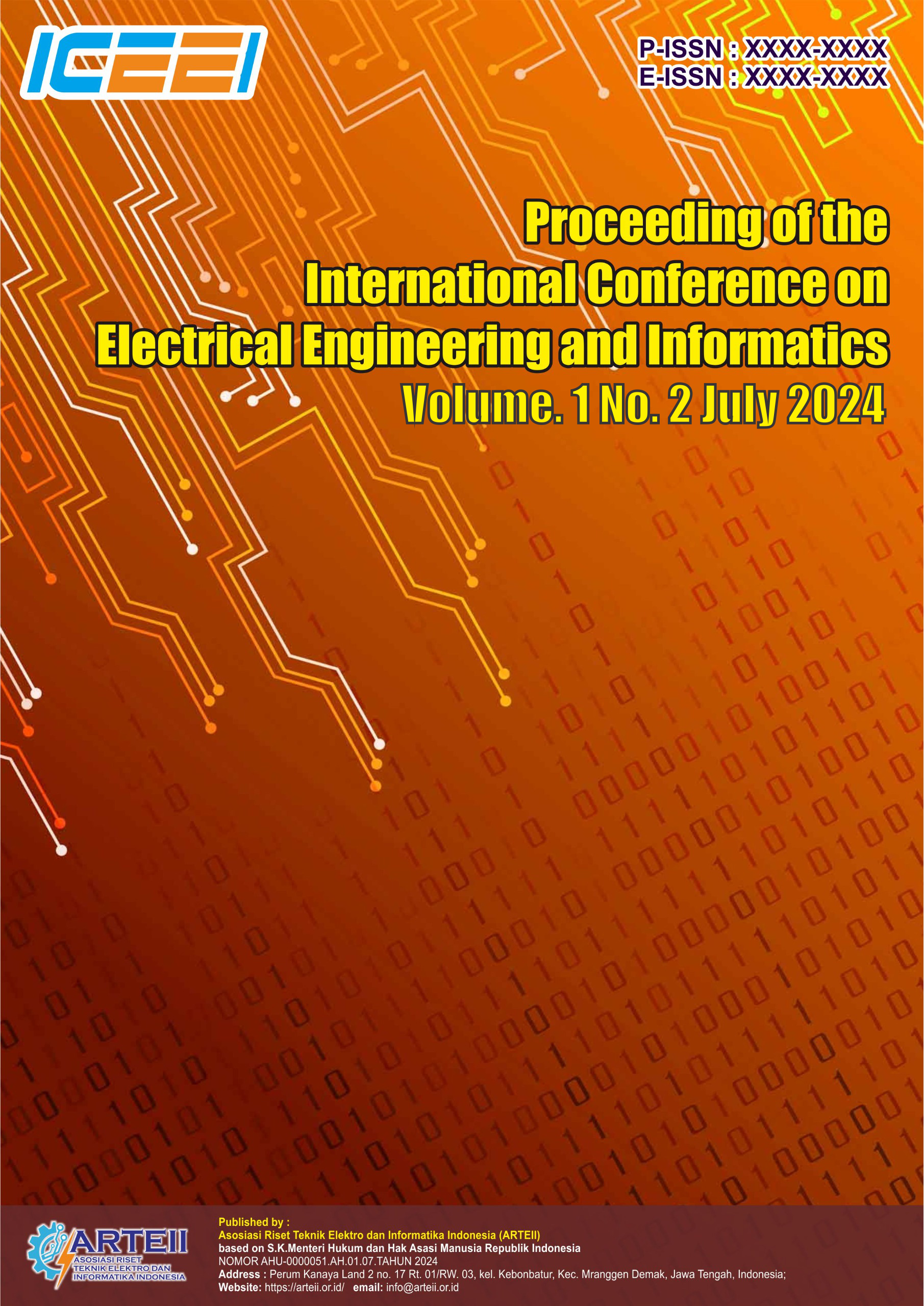Implementation of Six Sigma to Reduce Defects In Batik Cap Products To Maximize Production Capacity
Case Study: PT. Batik Banten Mukarnas
Keywords:
Batik Cap, Production Quality, Six Sigma, DMAICAbstract
Batik Banten Mukarnas is a company that produces stamped batik designs with various patterns and varieties of batik. Problems frequently arise in the company due to increased stamped batik production capacity to meet the demand for stamped batik design products, which continues to rise from stamped batik suppliers. Another impact of growing demand capacity is the high number of defects in stamped batik cloth products, because overall, the company's management, including human resources, tools, and methods, is not prepared for the increase in production capacity to meet the surge in consumer demand, resulting in an impact on the quality of the products produced—consequently, the organization endeavors to regulate the quality of stamped batik cloth at PT. Batik Banten Mukarnas establishes objectives that employ Six Sigma with the DMAIC method (Define, Measure, Analyze, Improve, and Control) in the production of batik stamp designs to meet production objectives. The results of the data processing that has been done obtained a sigma value before improvement for 3 CTQ of 3.54. After improvement, the sigma value increased to 3.86. While for the sigma value before improvement for 1 CTQ of 3.04, the sigma value increased to 3.42 after improvement. The factors contributing to defective products, as illustrated by the fishbone diagram, include methods, personnel, materials, machinery, and environmental conditions. The division leader consistently oversees and regulates operations, enhances the number of brushes, and trains operators to ensure proficient adherence to standard operating procedures (SOP).
References
Abdullah, GG, & Mardiani, GT (2019). Project Risk Management Information System Using Failure Mode and Effect Analysis Method at PT. Hilal Mitra Perkasa. 2–3.
Abdullah, MA (2018). Application of Statistical Control Charts in Controlling a Company's Production Results. Saintifik, 1(1), 5–13. https://doi.org/10.31605/saintifik.v1i1.71
Astuti, RD, & Lathifurahman, L. (2020). Lean Six-Sigma Application to Reduce Waste in Cement Packaging Section. JISI: Journal of Industrial System Integration, 7(2), 143. https://doi.org/10.24853/jisi.7.2.143-153
Hanifah, PSK, & Iftadi, I. (2022). Application of Six Sigma Method and Failure Mode Effect Analysis to Improve Sugar Production Quality Control. INTECH Journal of Industrial Engineering, Serang Raya University, 8(2), 90–98. https://doi.org/10.30656/intech.v8i2.4655
Kartikasari, V., & Romadhon, H. (2019). Analysis of Control and Improvement of Tuna Canning Process Quality Using Failure Mode and Effect Analysis (FMEA) and Fault Tree Analysis (FTA) Methods Case study at PT XXX East Java. Journal of Industrial View, 1(1), 1–10. https://doi.org/10.26905/jiv.v1i1.2999
Nurcahyanie, YD, Nizar., Kurnia., & Fadli. (2019). Making Tie-Dye Batik in Kalikatir Village. Penamas Adi Buana Journal, 2(2), 3(1) 34.
Ratnadi, R., & Suprianto, E. (2016). Production Quality Control Using Statistical Tools (Seven Tools) to Reduce Product Damage Rates. Indept Journal, 6(2), 11.
Riadi, S., & Haryadi, H. (2020). Controlling the Number of Product Defects in the Cutting Process Using the Quality Control Circle (Qcc) Method at PT. Toyota Boshoku Indonesia (Tbina). Journal Industrial Manufacturing, 5(1), 57. https://doi.org/10.31000/jim.v5i1.2433
Saori, S., Anjelia, S., Melati, R., Nuralamsyah, M., Djorghi, ERS, & Ulhaq, A. (2021). Analysis of Quality Control in the Candle Industry (Case Study at PD Ikram Nusa Persada, Sukabumi City). Journal of Research Innovation, Vol. 1(No. 10), 2133–2138.
Saputri, R., Vitasari, P., & Adriantantri, E. (2022). Identification of Defective Products Using CTQ and DPMO Methods in the Sari Rasa Tempe Chips Home Industry. Valtech Journal, 5(1), 94–100. https://ejournal.itn.ac.id/index.php/valtech/article/view/4518
Sari, IP, Wulandari, S., & Maya, S. (2019). The Urgency of Batik Mark in Answering Indonesian Batik Problems (Case Study at Tanjung Bumi Batik Center). Socio E-Cons, 11(1), 16. https://doi.org/10.30998/sosioekons.v11i1.2932
Siregar, AP, Raya, AB, Nugroho, AD, Indana, F., Prasada, IMY, Andiani, R., Simbolon, TGY, & Kinasih, AT (2020). Efforts to Develop the Batik Industry in Indonesia. Dynamics of Crafts and Batik: Scientific Magazine, 37(1). https://doi.org/10.22322/dkb.v37i1.5945
Sukirno, E., Prasetiyo, J., Rosma, R., & Sari, MHRSR (2021). Implementing the Six Sigma Dmaic Method to Reduce Defects in Exhaust Pipe XE 611. Journal of Industrial Engineering Applications (JAPTI), 2(2), 75-83.
Suharyanto, S., Herlina, RL, & Mulyana, A. (2022). Analysis of Waring Product Quality Control Using the Seven Tools Method at CV. Kas Sumedang. Tedc Journal, 16(1), 37-49.
Tambunan, DG, Sumartono, B., & Moektiwibowo, DH (2020). Analysis of Quality Control Using the Six Sigma Method to Reduce Defects in the Suitcase Production Process at PT SRG. Journal of Industrial Engineering, 9(1), 58–77.
Wicaksono, A., Priyana, ED, & Nugroho, YP (2023). Quality Control Analysis Using Failure Mode and Effects Analysis (FMEA) Method on Centrifugal Pumps at PT. X. Journal of Industrial Engineering: Journal of Research Results and Scientific Works in the Field of Industrial Engineering, 9(1), 177-185. https://doi.org/10.24014/jti.v9i1.22233





